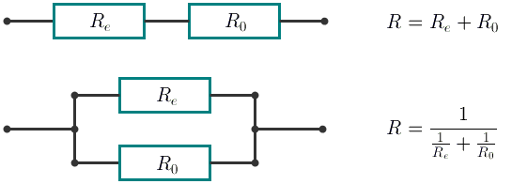Mad scientist Mike is building a time machine in his spare time. To finish the work, he needs a resistor with a certain resistance value.
However, all Mike has is lots of identical resistors with unit resistance R0 = 1. Elements with other resistance can be constructed from these resistors. In this problem, we will consider the following as elements:
- one resistor;
- an element and one resistor plugged in sequence;
- an element and one resistor plugged in parallel.

With the consecutive connection the resistance of the new element equals R = Re + R0. With the parallel connection the resistance of the new element equals  . In this case Re equals the resistance of the element being connected.
. In this case Re equals the resistance of the element being connected.
Mike needs to assemble an element with a resistance equal to the fraction  . Determine the smallest possible number of resistors he needs to make such an element.
. Determine the smallest possible number of resistors he needs to make such an element.
The single input line contains two space-separated integers a and b (1 ≤ a, b ≤ 1018). It is guaranteed that the fraction  is irreducible. It is guaranteed that a solution always exists.
is irreducible. It is guaranteed that a solution always exists.
Print a single number — the answer to the problem.
Please do not use the %lld specifier to read or write 64-bit integers in С++. It is recommended to use the cin, cout streams or the %I64d specifier.

#include <bits/stdc++.h> typedef long long LL; using namespace std; #define SIZE 105 LL res = 0; LL gcd(LL a,LL b){ if (b == 0) return a; res += a/b; return gcd(b,a % b); } int main(){ // freopen("test.in","r",stdin); ios::sync_with_stdio(false); LL a,b; cin >> a >> b; gcd(a,b); cout << res; return 0; }
